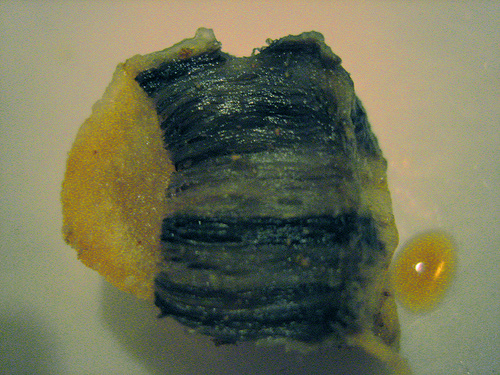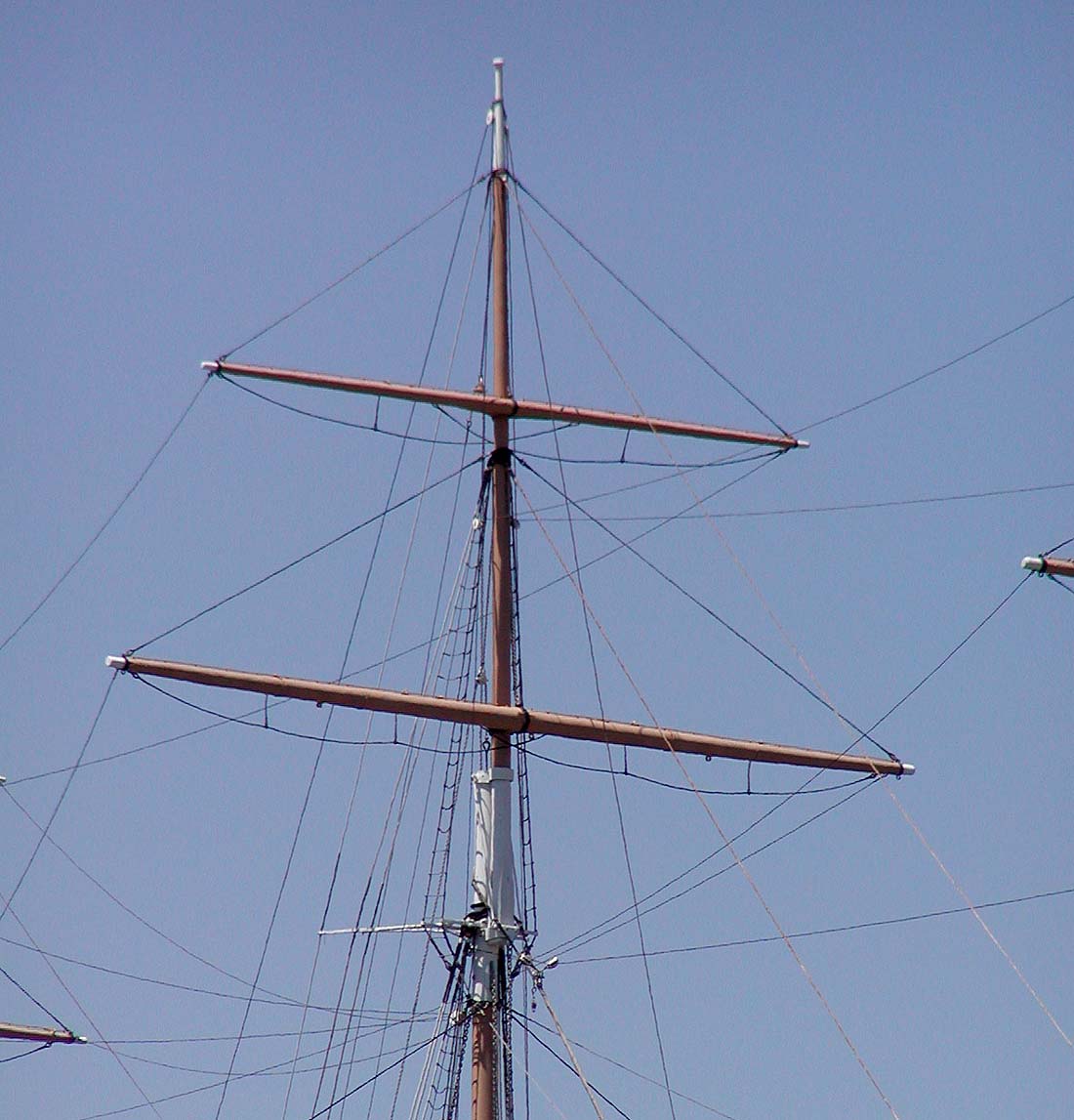|
Trywork
A trywork is a furnace, used to heat blubber from whales for the recovery of oil, on a whaling ship. The trywork is located aft of the fore-mast, and is typically constructed of brick and attached to the deck with iron braces. Two cast-iron trypots are set atop the furnace. It is similar to the rendering process for producing lard by heating or frying fatty pork. A reservoir of water under the bricks keeps the furnace from scorching the wood of the deck. In the 18th and 19th century New England whaling industry, tryworks on whaling ships allowed the vessels to stay at sea longer as it allowed them to boil out the oil during the voyage and not have to carry unprocessed blubber home. Slices of blubber were cut as thinly as possible for the process, and on New England whaling ships, these slices were known as "bible leaves" by the sailors. The ability to use tryworks at sea thus enabled the Yankee whaling industry to flourish. [...More Info...] [...Related Items...] OR: [Wikipedia] [Google] [Baidu] |
Trypot
A try pot is a large pot used to remove and render the oil from blubber obtained from cetaceans (whales and dolphins) and pinnipeds (seals), and also to extract oil from penguins. Once a suitable animal such as a whale had been caught and killed, the blubber was stripped from the carcass in a process known as flensing, cut into pieces, and melted in the try pots to extract the oil. Early on in the history of whaling, vessels had no means to process blubber at sea and had to bring it into port for processing. Later, though, whaling vessels frequently included a trywork, a brick furnace and set of try pots built into the deck. In the 18th- and 19th-century New England whaling industry, the use of the trywork allowed ships to stay at sea longer and boil out their oil. The slices of blubber were kept as thin as possible for the process, and on New England whaling ships, these slices were called "bible leaves" by the sailors. The use of an onboard trywork was the major technologica ... [...More Info...] [...Related Items...] OR: [Wikipedia] [Google] [Baidu] |
Whale Oil
Whale oil is oil obtained from the blubber of whales. Oil from the bowhead whale was sometimes known as train-oil, which comes from the Dutch word ''traan'' ("tear drop"). Sperm oil, a special kind of oil used in the cavities of sperm whales, differs chemically from ordinary whale oil: it is composed mostly of liquid wax. Its properties and applications differ from those of detergentized whale oil, and it was sold for a higher price. Source and use Emerging industrial societies used whale oil in oil lamps and to Soap#History, make soap. In the 20th century it was made into margarine. There is a misconception that commercial development of the petroleum industry and vegetable oils saved whales from extinction. In fact, the development of petroleum accelerated the whaling industry, which peaked in the 1960s. In the 21st century, with most countries having banned whaling, the sale and use of whale oil has practically ceased. Whale oil was obtained by boiling strips of blubber ha ... [...More Info...] [...Related Items...] OR: [Wikipedia] [Google] [Baidu] |
Whaling Ship
A whaler or whaling ship is a specialized vessel, designed or adapted for whaling: the catching or processing of whales. Terminology The term ''whaler'' is mostly historic. A handful of nations continue with industrial whaling, and one, Japan, still dedicates a single factory ship for the industry. The vessels used by aboriginal whaling communities are much smaller and are used for various purposes over the course of the year. The ''whale catcher'' was developed during the Steam-powered vesselage , and then driven by diesel engines throughout much of the twentieth century. It was designed with a harpoon gun mounted at its bow and was fast enough to chase and catch rorquals such as the fin whale. At first, whale catchers either brought the whales they killed to a whaling station, a settlement ashore where the carcasses could be processed, or to its factory ship anchored in a sheltered bay or inlet. With the later development of the slipway at the ship's stern, whale catcher ... [...More Info...] [...Related Items...] OR: [Wikipedia] [Google] [Baidu] |
New Bedford, Massachusetts
New Bedford is a city in Bristol County, Massachusetts, United States. It is located on the Acushnet River in what is known as the South Coast region. At the 2020 census, New Bedford had a population of 101,079, making it the state's ninth-largest city and the largest of the South Coast region. It is the second-largest city in the Providence-New Bedford, RI-MA Metropolitan Statistical Area, which is also a part of the greater Boston, Massachusetts Combined Statistical Area. Up through the 17th century, the area was the territory of the Wampanoag Indians. English colonists bought the land on which New Bedford would later be built from the Wampanoag in 1652, and the original colonial settlement that would later become the city was founded by English Quakers in the late 17th century. The town of New Bedford itself was officially incorporated in 1787. During the first half of the 19th century, New Bedford was one of the world's most important whaling ports. At its economic hei ... [...More Info...] [...Related Items...] OR: [Wikipedia] [Google] [Baidu] |
Blubber
Blubber is a thick layer of Blood vessel, vascularized adipose tissue under the skin of all cetaceans, pinnipeds, penguins, and sirenians. It was present in many marine reptiles, such as Ichthyosauria, ichthyosaurs and plesiosaurs. Description Lipid-rich, collagen fiber-laced blubber comprises the Subcutaneous tissue, hypodermis and covers the whole body, except for parts of the appendages. It is strongly attached to the musculature and skeleton by highly organized, fan-shaped networks of tendons and ligaments, can comprise up to 50 per cent of the body mass of some marine mammals during some points in their lives, and can range from thick in dolphins and smaller whales, to more than thick in some bigger whales, such as Right whale, right and bowhead whales. However, this is not indicative of larger whales' ability to retain heat better, as the thickness of a whale's blubber does not significantly affect heat loss. More indicative of a whale's ability to retain heat is the wat ... [...More Info...] [...Related Items...] OR: [Wikipedia] [Google] [Baidu] |
Whale
Whales are a widely distributed and diverse group of fully Aquatic animal, aquatic placental mammal, placental marine mammals. As an informal and Colloquialism, colloquial grouping, they correspond to large members of the infraorder Cetacea, i.e. all cetaceans apart from dolphins and porpoises. Dolphins and porpoises may be considered whales from a formal, Cladistics, cladistic perspective. Whales, dolphins and porpoises belong to the order Cetartiodactyla, which consists of even-toed ungulates. Their closest non-cetacean living relatives are the hippopotamuses, from which they and other cetaceans diverged about 54 million years ago. The two parvorders of whales, baleen whales (Mysticeti) and toothed whales (Odontoceti), are thought to have had their Most recent common ancestor, last common ancestor around 34 million years ago. Mysticetes include four Neontology, extant (living) Family (biology), families: Balaenopteridae (the rorquals), Balaenidae (right whales), Cetotheriid ... [...More Info...] [...Related Items...] OR: [Wikipedia] [Google] [Baidu] |
Mast (sailing)
The mast of a sailing vessel is a tall spar, or arrangement of spars, erected more or less vertically on the median line of a ship or boat. Its purposes include carrying sails, spars, and derricks, giving necessary height to a navigation light, look-out position, signal yard, control position, radio aerial, or signal lamp. Large ships have several masts, with the size and configuration depending on the style of ship. Nearly all sailing masts are guyed. Until the mid-19th century, all vessels' masts were made of wood formed from a single or several pieces of timber which typically consisted of the trunk of a conifer tree. From the 16th century, vessels were often built of a size requiring masts taller and thicker than from single tree trunks. On these larger vessels, to achieve the required height, the masts were built from up to four sections (also called masts). From lowest to highest, these were called: lower, top, topgallant, and royal masts. Giving the lower section ... [...More Info...] [...Related Items...] OR: [Wikipedia] [Google] [Baidu] |
Rendering (animal Products)
Rendering is a process that converts waste animal biological tissue, tissue into stable, usable materials. Rendering can refer to any processing of animal products into more useful materials, or, more narrowly, to the rendering of whole animal fatty tissue into purified fats like lard or tallow. Rendering can be carried out on an industrial, farm, or kitchen scale. It can also be applied to non-animal products that are rendered down to pulp. The rendering process simultaneously dries the material and separates the fat from the bone and protein, yielding a fat commodity and a protein Meal (granular material), meal. Input sources In animal products, the majority of tissue processed comes from slaughterhouses, but also includes restaurant grease, butcher shop trimmings, and expired meat from grocery stores. This material can include the fatty tissue, bones, and offal, as well as entire carcasses of animals condemned at slaughterhouses and those that have died on farms, in transit, ... [...More Info...] [...Related Items...] OR: [Wikipedia] [Google] [Baidu] |
New England
New England is a region consisting of six states in the Northeastern United States: Connecticut, Maine, Massachusetts, New Hampshire, Rhode Island, and Vermont. It is bordered by the state of New York (state), New York to the west and by the Canadian provinces of New Brunswick to the northeast and Quebec to the north. The Gulf of Maine and Atlantic Ocean are to the east and southeast, and Long Island Sound is to the southwest. Boston is New England's largest city and the capital of Massachusetts. Greater Boston, comprising the Boston–Worcester–Providence Combined Statistical Area, houses more than half of New England's population; this area includes Worcester, Massachusetts, the second-largest city in New England; Manchester, New Hampshire, the largest city in New Hampshire; and Providence, Rhode Island, the capital of and largest city in Rhode Island. In 1620, the Pilgrims (Plymouth Colony), Pilgrims established Plymouth Colony, the second successful settlement in Briti ... [...More Info...] [...Related Items...] OR: [Wikipedia] [Google] [Baidu] |
Moby-Dick
''Moby-Dick; or, The Whale'' is an 1851 Epic (genre), epic novel by American writer Herman Melville. The book is centered on the sailor Ishmael (Moby-Dick), Ishmael's narrative of the maniacal quest of Captain Ahab, Ahab, captain of the whaler, whaling ship ''Pequod (Moby-Dick), Pequod'', for vengeance against Moby Dick (whale), Moby Dick, the giant white sperm whale that bit off his leg on the ship's previous voyage. A contribution to the literature of the American Renaissance (literature), American Renaissance, ''Moby-Dick'' was published to mixed reviews, was a commercial failure, and was out of print at the time of the author's death in 1891. Its reputation as a Great American Novel was established only in the 20th century, after the 1919 centennial of its author's birth. William Faulkner said he wished he had written the book himself, and D. H. Lawrence called it "one of the strangest and most wonderful books in the world" and "the greatest book of the sea ever written". It ... [...More Info...] [...Related Items...] OR: [Wikipedia] [Google] [Baidu] |






